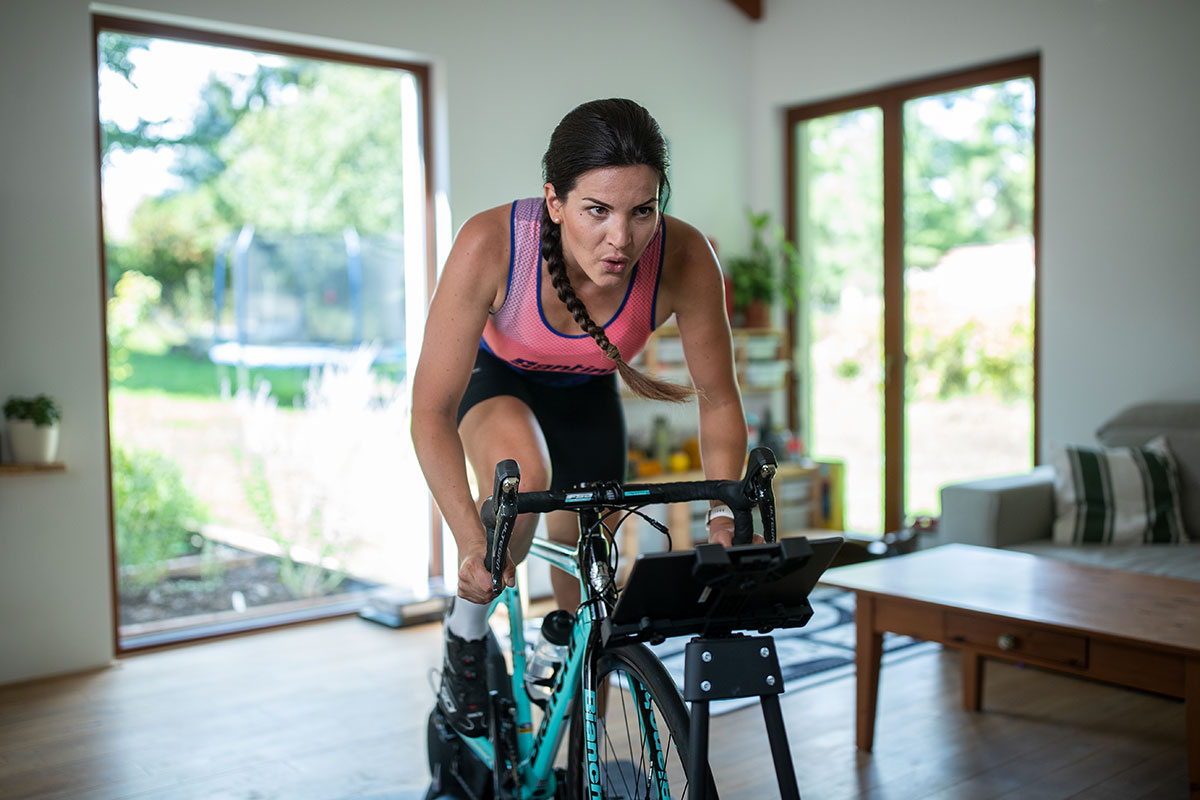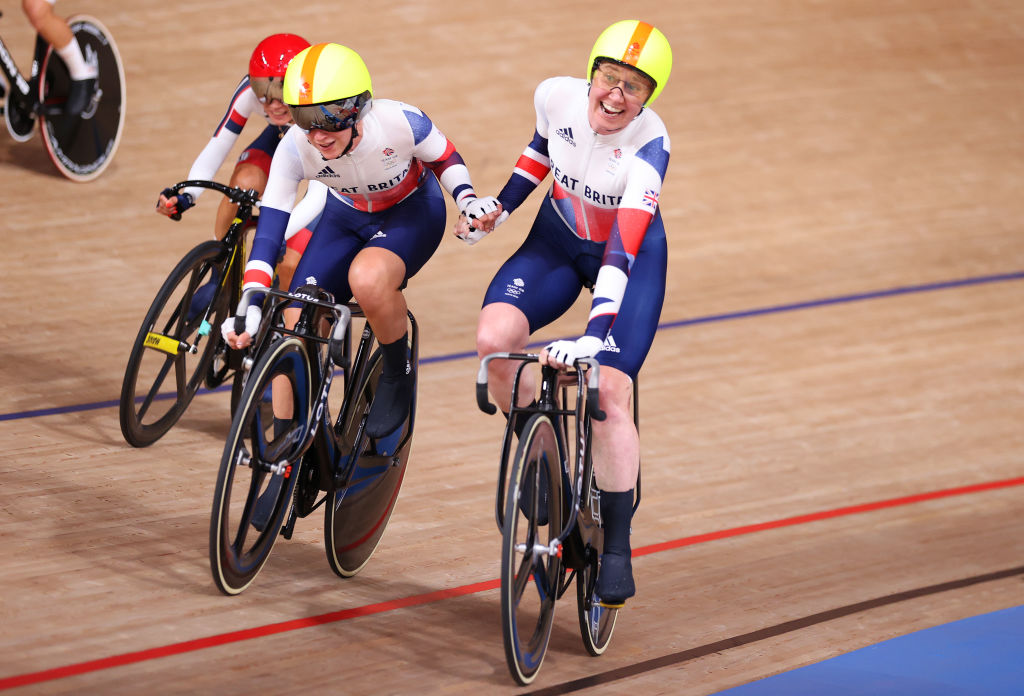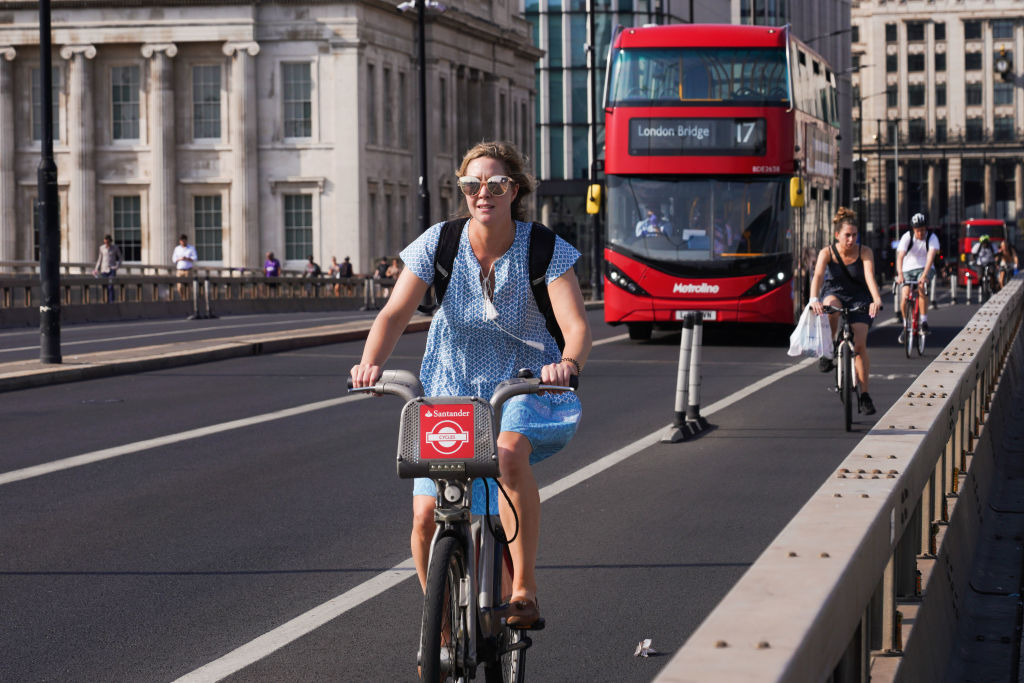How cycling can benefit physical and mental health for women
From commuting to indoor cycling, getting time on the bike has unique benefits for women

There is a particular joy that accompanies riding a bike, as if every worry in the world has slipped from the handlebars and, ejected in the slipstream, lies in a heap on a verge beside the road.
It has long been known that exercise can help improve mental health and cycling is no different, reducing a person’s risk of dementia, improving their sleep quality and promoting a greater sense of well-being.
Cycling out in nature and in green spaces can provide added benefits; a 2011 study found that exercising in natural environments was associated with greater feelings of revitalisation, increased energy and positive engagement alongside decreased tension, confusion, anger and depression, though it acknowledged that further research was needed to better understand this link.
“Whenever I have a bad day or a bad period, I go for a bike ride and suddenly everything is great,” Adna Dumitrescu, co-founder of the Edinburgh-based cycling club Queens of Pain, says.
“I use it as a quite meditative aspect because when I ride I really clear my head and I’m lucky to live in Scotland where the scenery is so beautiful and I just look outside and feel part of it and don’t have to think about whatever dumb stuff is happening in my life.”
While mental health concerns affect everyone, women are generally at greater risk, the Mental Health Foundation says, partly due to social and economic factors such as being more likely to live in poverty and experience abuse.
Cycling can also be a sociable activity, creating meaningful personal connections through its community clubs, further boosting mental health.
The latest race content, interviews, features, reviews and expert buying guides, direct to your inbox!
“We’ve enabled through our social rides to build a space where friendship can be built, connection can be sustained and true sisterhood can flourish and it’s been so beautiful to watch that,” Samra Said, Chair of Cycle Sisters - a London-based organisation inspiring and enabling Muslim women to cycle - says.
Particularly through the winter months, when lots of people’s mental health declines, cycling in a group can provide vital endorphins and social connection, Said adds, referencing her organisation’s annual winter challenge “Smiles & Miles” to encourage members to continue cycling in winter.
In Cycling UK’s off-road report, 15% of female survey respondents said the social side was their main motivation to go mountain biking, compared to 12% of men. In the same survey, 91% of respondents added that cycling was very or fairly important for their mental health.

Even without formalised clubs, cycling can still be sociable, providing a stronger link to the community than travelling by car.
“It’s a really interesting way to see the place that you live in,” Councillor Liz Clements – Birmingham’s Cabinet Member for Transport – says. “Because I think when you’re on a bike you can stop easily and look at things, talk to people, and it’s a really good social activity.”
While cycling can connect a person to the community around them, it can also ground them in themselves, forging a stronger sense of identity.
“People have definitely reported back a positive outlook in how they see themselves,” Said says. “And how they have become to their own family not just a mum or a sister or a wife but they’re able to add value in how they’re building an outdoor life and outdoor experience for their family.”
As well as improving mental health, cycling has obvious physical health benefits. Being active every day reduces a person’s risk of Type 2 diabetes, coronary heart disease, Alzheimer’s disease, breast cancer and colon cancer. In fact, the benefits are so great that if every Londoner walked or cycled for 20 minutes a day, Transport for London estimates that 1 in 6 early deaths would be prevented and save the NHS £1.7 billion in treatment costs over the next 25 years.

In Stockholm, a study found that bicycle commuters whose average journey distance was just 4.5km reduced their yearling mortality by 16% and resulted in 11.3 fewer preterm deaths per year.
Women are more likely than men to suffer from osteoarthritis, and for women who do, cycling can provide a form of exercise that is gentle on joints and preserves cartilage. The Arthritis Foundation even names indoor cycling as one of the most effective workouts for arthritic joints.
Studies have also found that exercise, including cycling, can help ease period pain since it releases endorphins, providing pain relief and helping to reduce levels of prostaglandins – chemicals that cause muscle contractions.
Using bikes as transport can also provide public health benefits to others as it neither produces exhaust fumes nor contributes to pollution, both of which can cause respiratory and cardiovascular disease among other ailments. Meeting the British government’s target to double cycling and increase walking would prevent 8,300 premature deaths over a decade caused by poor air quality in England alone, a Sustrans report estimated in 2017.
Cycling, particularly as a form of active transport, is one of the most effective ways of improving health, Britain’s Chief Medical Officer, Chris Whitty, said last year.
“Active transport is a particularly important way to do this because it builds it into people’s normal routines of daily life, rather than being seen as something that is separate,” he said.
“I think there’s often a feeling that it’s going to be very hard work to get people to, for example, take up cycling [but] if you went back to the ’50s and ’60s there were extremely high rates of people cycling for work as well as recreationally across the country and then they fell away.”
By cycling recreationally, as a form of transport, or even competitively, all these health benefits can be unlocked.
Issy Ronald has just graduated from the London School of Economics where she studied for an undergraduate and masters degree in History and International Relations. Since doing an internship at Procycling magazine, she has written reports for races like the Tour of Britain, Bretagne Classic and World Championships, as well as news items, recaps of the general classification at the Grand Tours and some features for Cyclingnews. Away from cycling, she enjoys reading, attempting to bake, going to the theatre and watching a probably unhealthy amount of live sport.
